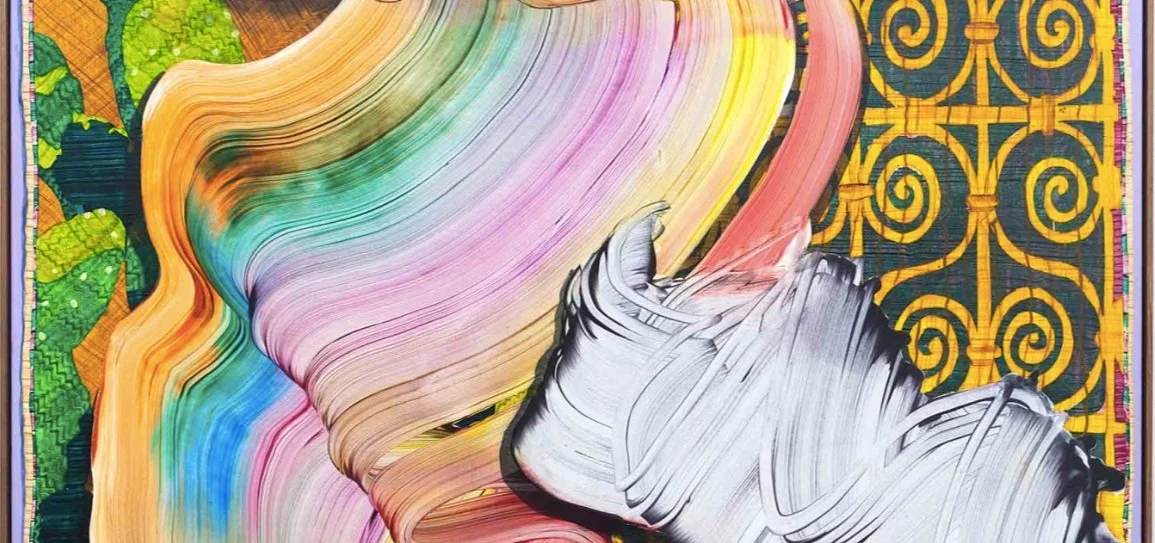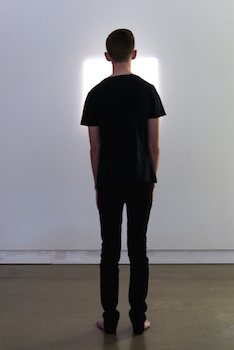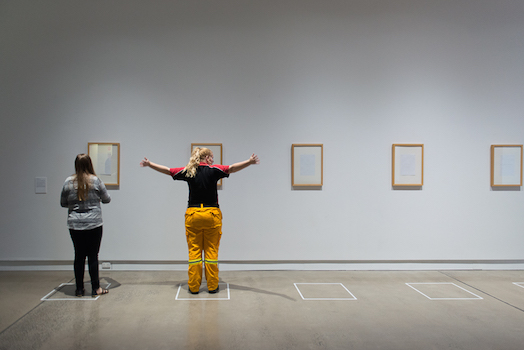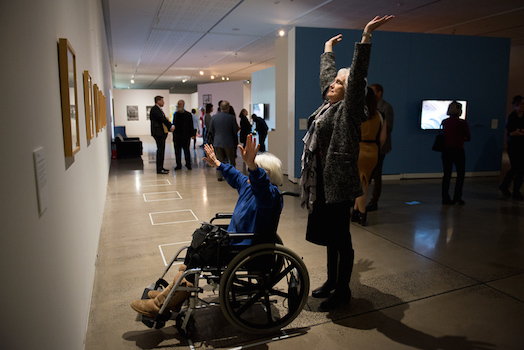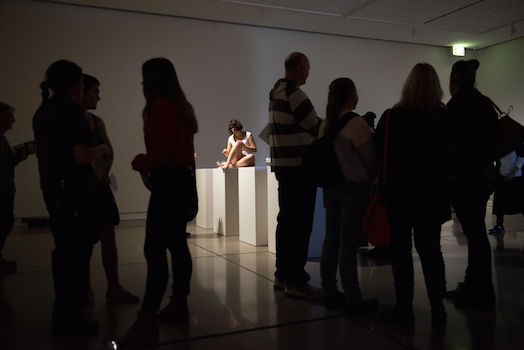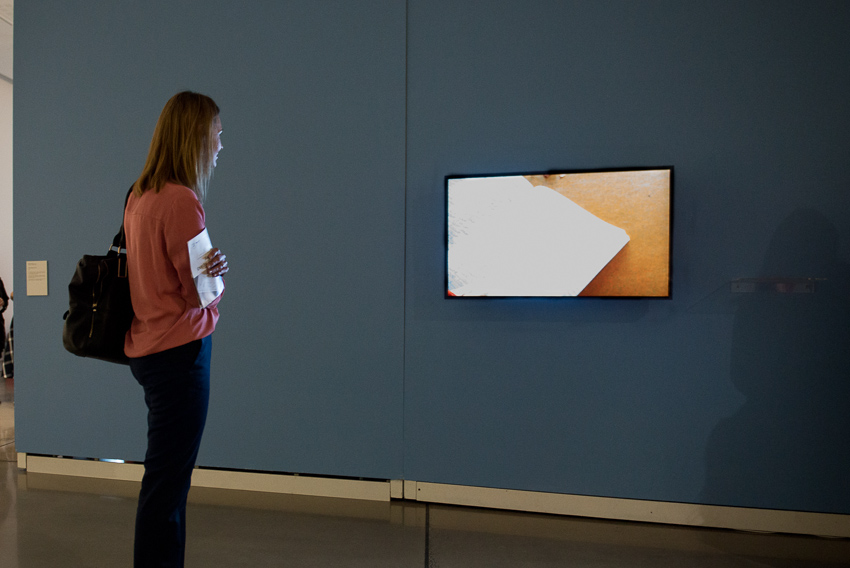Last month I had the opportunity to attend the Craft Council UK’s biennial Make:Shift conference in Manchester, as part of my work with the Australian Design Centre.
The focus, as Creative Director Annie Warburton noted, was to “showcase an extraordinary array of disruptive innovation taking place throughout craft but also interrogating, to what end?”
The keynote addresses, panel discussions, presentations and conversations were focused around the impact of craft innovation in three spheres: social innovation, environmental sustainability and wellbeing. They joined makers and designers with scientists, technologists and academics because, as Warbuton noted in her opening address, “community, connection and collaboration is what brings breakthrough” and it is vital to locate craft practice within 21st century innovations. “Traditional skills are just a different kind of technology and as important as high-end technology. Makers have always worked with new materials, transforming production processes along the way.”
Mark Miodownik, Professor of Materials and Society at University College London, gave the opening keynote address. It was a lively and fascinating discussion of materials in relation to the culture of making. He noted the creative tension and slight distrust between art and science, which he argued can be useful in helping to identify different views, outcomes and processes and cited his hilarious experience on the BBC4 show Chef v. Science as an example of this conflict. In the words of chef Marcus Wearing, “At the end of the day [making anything] is about love, care and understanding.” It’s not about scientifically recreating mashed potato just because you can.
Miodownik also unpacked some of our easy assumptions about new technology being better technology – citing the fact that despite its increasing prevalence, carbon is not a recyclable material and that solar cells, while allowing us to wean ourselves off fossil fuels, have nevertheless been designed with little care – they are objects stuck on roofs and not integrated into our lives. Miodownik argued that animate materials are in fact the future and cited the example of self-healing concrete roads, which was a provocative and exciting thought. Miodownik concluded by saying that, “the act of making is about growing our humanity” and that social consciousness through making will enable us to solve some of the problems facing us today.
In the afternoon, there was an engaging discussion on the use of digital technologies in craft education with Drummond Masterton, Head of Sustainable Product Design at Falmouth University and jeweller Sarah O’Hana.
O’Hana works with titanium and steel and was invited to undertake a PhD at Manchester University as part of the engineering department, exploring the use of lasers and titanium.
The experience led to a new body of work that sought to explain new research to new audiences through wearable objects. O’Hana talked about the creative disruption her presence brought to the engineering department and cited a failed experiment that left the engineer despondent and O’Hana excited, because its effect on the titanium offered new aesthetic and creative possibilities.
Masterton talked about the importance of language, particularly in a learning environment, and its ability empower or inhibit. For instance, an engineer does things precisely, using materials in the ways they are intended, but if you call them a craftsperson they suddenly have permission to take more risks, experiment with technology and uncover news ways of using machines and applying knowledge. He noted than even when teaching students today about 3D printing and other available technologies, there remains a persistent desire to still learn and understand ‘traditional’ ways of making. He argued that when it comes to technology (as both a tool and an industry) there needs to be a model with the use of technology that enables risk-taking and that this isn’t currently the case. His point – “technology won’t solve problems, people will.”
In discussing the crisis in craft education in the UK (and arguably everywhere) O’Hana reitered Masterton’s point, and argued that while it was important to have specialisms, the craft education sector must invite other cultures, such as architecture and IT communication, into our own culture to help understand and communicate need and value. Craft, she said, is bad at articulating its value to other sectors.
Highlights of the second day include the conversation between Daniel Charny, founder of creative cultural consultancy From Now Own and curator of the 2011 V&A exhibition The Power of Making and Hannah Fox, Silk Mill Project Director at Derby Museums.
The conversation was centred around the research Charny had undertaken for his report on the cultural role of maker spaces, which set out to articulate the differences between engagement with or engagement through making and what these means in terms of local communities but also crafts-based skills development. Makerspaces were discussed in the context of other making spaces – residencies, project labs and museums, and while the conversation made no fast conclusions about the future of maker spaces, there was a general agreement that the popularity of makerspaces was a reflection on a perceived lack of other spaces in which to informally make and learn and that, in the context of the work undertaken at the Silk Mill in Derby, it is vital that museums expand their perspective around what they can be and what they do.
OTHER POSTS
-
2023
- Jul 26, 2023 Sydney Morning Herald: Hustle Harder Jul 26, 2023
- Jul 21, 2023 Publication day! Museum Teen Program How-To Kit Jul 21, 2023
- Jul 20, 2023 Sydney Morning Herald: "A lesson in listening" Jul 20, 2023
- Jul 4, 2023 Art Party at The Condensery Jul 4, 2023
- Jun 13, 2023 Sydney Morning Herald: "These artists shared their work via post, now the paint is almost dry on the result." Jun 13, 2023
- May 18, 2023 Panel talk: Australian Museums & Galleries Association National Conference May 18, 2023
-
2022
- Dec 1, 2022 Published outcomes - National Gallery of Australia: Digital Young Writers Mentorship Dec 1, 2022
- Nov 29, 2022 ABC Arts: 'Air' at QAGOMA Nov 29, 2022
- Aug 28, 2022 The Condensery - Somerset Regional Art Gallery: new youth engagement project - 'Things I Want To Say' Aug 28, 2022
- Aug 13, 2022 ABC Arts: Megan Cope is building a living, breathing artwork on Minjerribah Aug 13, 2022
- Jul 21, 2022 Exhibition essay: Topographies of painting - Gregory Hodge, Sullivan + Strumpf Jul 21, 2022
- Jul 2, 2022 ABC Arts: Richard Bell at documenta fifteen Jul 2, 2022
- Feb 28, 2022 National Gallery of Australia: Digital Young Writers Mentorship Feb 28, 2022
- Jan 5, 2022 Journal of Museum Education article: "Pockets of Resilience - the Digital Responses of Youth Collectives in Contemporary Art Museums During Lockdown." Jan 5, 2022
-
2021
- Nov 13, 2021 ABC Arts: Tarnanthi Nov 13, 2021
- Oct 27, 2021 A New Approach: Enduring Foundations, Bold Ambitions Oct 27, 2021
- Oct 16, 2021 Churchill Chat - Equity, Inclusion & the Impact of COVID-19 on the Arts Oct 16, 2021
- Aug 24, 2021 Art Collector: Pull Focus interview with Abdul Abdullah & Abdul-Rahman Abdullah Aug 24, 2021
- Aug 8, 2021 ABC Arts: Dean Cross and a spotlight on the work of Australia's regional galleries Aug 8, 2021
- Jun 30, 2021 ABC Arts: Hilma af Klint - The Secret Paintings at the Art Gallery of New South Wales Jun 30, 2021
-
2020
- Oct 24, 2020 Raise your voice: young people in the arts Oct 24, 2020
- Oct 1, 2020 Art Collector: Pull Focus interviews for Sydney Contemporary Oct 1, 2020
- Sep 4, 2020 Recommended reading - Teen Vogue Sep 4, 2020
- Jun 8, 2020 SAMAG Talk - Bringing it home: Innovation & Ideas from the Churchill Fellowship Jun 8, 2020
- Jun 1, 2020 MCA GENEXT Goes Online Jun 1, 2020
- May 23, 2020 Vale Frank Watters - Artlink magazine May 23, 2020
-
2019
- Nov 19, 2019 Churchill Fellowship Report - findings Nov 19, 2019
- Aug 21, 2019 Upcoming SAMAG Panel - Youth arts: why we should care what young people think Aug 21, 2019
- May 10, 2019 By young people for young people - A report on the impact of GENEXT at MCA Australia May 10, 2019
- Feb 1, 2019 Art Collector Issue 87: 50 Things Collectors Should Know Feb 1, 2019
-
2018
- Nov 23, 2018 Artist texts: Clare Thackway Nov 23, 2018
- Oct 29, 2018 Announcement of Churchill Fellowship 2018 Oct 29, 2018
- Sep 30, 2018 Frida Kahlo at the Victoria & Albert Museum Sep 30, 2018
- Sep 7, 2018 Elizabeth Willing profile for Art Collector magazine Sep 7, 2018
- Aug 2, 2018 Beyond Community Engagement: Transforming Dialogues in Art, Education and the Cultural Sphere Aug 2, 2018
- Jun 21, 2018 Spotlight on MCA Young Guides Jun 21, 2018
- Feb 1, 2018 Art Collector Issue 84: Undiscovered Feb 1, 2018
-
2017
- Jul 26, 2017 Te Tuhi Talks Jul 26, 2017
- Apr 2, 2017 New role: Museum of Contemporary Art Australia Apr 2, 2017
- Jan 19, 2017 Louise Paramor profile for Art Collector magazine, issue 78 Jan 19, 2017
-
2016
- Dec 1, 2016 Craft Council UK – Make:Shift conference, Manchester, 10-11 Nov, 2016 Dec 1, 2016
- Oct 30, 2016 Alison Croggon on the arts funding crisis and the importance of criticism Oct 30, 2016
- Apr 27, 2016 Lottie Consalvo: mid-fall, Alaska Projects Apr 27, 2016
- Mar 18, 2016 20th Biennale of Sydney: The future is here it's just not evenly distributed Mar 18, 2016
-
2015
- Nov 22, 2015 Celeste Boursier-Mougenot at the NGV Nov 22, 2015
- Sep 22, 2015 Educating People Like Us Sep 22, 2015
- Aug 2, 2015 What It Means to be Me, Western Plains Cultural Centre, Dubbo, 26 July 2015 Aug 2, 2015
- Jul 12, 2015 More Marina Magic Jul 12, 2015
- Jul 12, 2015 Art Collector cover story Jul 12, 2015
- Jun 25, 2015 Lessons learnt: Kaldor regional progress report Jun 25, 2015
- May 5, 2015 Kaldor pilots regional engagement project May 5, 2015
-
2014
- Aug 21, 2014 Melbourne Art Fair 2014 Aug 21, 2014
- Jun 24, 2014 Fresh Faces Symposium: Art Gallery of New South Wales Jun 24, 2014
- May 24, 2014 REVIEW: Sleepers Awake, MCA C3West Project, Bungaribee May 24, 2014
- Feb 20, 2014 Kevin Chin profile for Art Collector magazine Feb 20, 2014
- Feb 9, 2014 Artlink review: 21st Century Portraits Feb 9, 2014
- Jan 12, 2014 REVIEW: Christian Boltanski, Chance, Carriageworks Jan 12, 2014
-
2013
- Sep 20, 2013 The problem with 'Australia' Sep 20, 2013
- Sep 4, 2013 Margate: An away day and a visit to Turner Contemporary Sep 4, 2013
- Jul 28, 2013 A round-up: Miles Aldridge, Somerset House; Katharina Fritsch, Fourth Plinth, Trafalgar Square; Michael Landy, ‘Saints Alive’, National Gallery Jul 28, 2013
- Jul 21, 2013 Peckham weekends Jul 21, 2013
- Jul 11, 2013 Harpa Concert Hall, Reykjavik Jul 11, 2013
- Jun 4, 2013 St Paul-de-Vence Jun 4, 2013
- May 30, 2013 A visit to Paul Cezanne's studio May 30, 2013
-
2012
- Oct 30, 2012 REVIEW: DOCUMENTA 13, Kassel, Germany Oct 30, 2012
- Oct 28, 2012 Tino Sehgal, These Associations, Tate Modern, London Oct 28, 2012
- Aug 4, 2012 Jeremy Deller, Sacrilege, Burgess Park, London Aug 4, 2012
- Apr 14, 2012 REVIEW: Martin Creed, Sketch Nightclub, London Apr 14, 2012
-
2010
- Jul 19, 2010 Christian Boltanski, Les archives du coeur, Serpentine Gallery, London Jul 19, 2010
- Jul 9, 2010 REVIEW: 1:1 Architects Build Small Spaces, Victoria & Albert Museum, London Jul 9, 2010
- Jul 5, 2010 REVIEW: EXPOSED: Voyeurism, Surveillance & the Camera, Tate Modern, London Jul 5, 2010
- Jun 21, 2010 REVIEW: Sean Scully New Work, Timothy Taylor Gallery, London Jun 21, 2010
- Jun 14, 2010 Yinka Shonibare MBE, “Nelson’s Ship in a Bottle”, Fourth Plinth, Trafalgar Square Jun 14, 2010
- May 20, 2010 REVIEW: Céleste Boursier-Mougenot, Barbican Centre, London May 20, 2010
- May 16, 2010 REVIEW: Decode: Digital Design Sensation, Victoria & Albert Museum, London May 16, 2010
- May 9, 2010 REVIEW: Olafur Eliasson: Take Your Time, Museum of Contemporary Art, Sydney May 9, 2010
-
2009
- Dec 1, 2009 REVIEW: Anish Kapoor, Royal Academy of Arts Dec 1, 2009
- Mar 27, 2009 REVIEW: Mythologies, Haunch of Venison Mar 27, 2009
-
2008
- Sep 17, 2008 REVIEW: Suzanne Treister, ALCHEMY, Annely Juda Fine Art Sep 17, 2008



